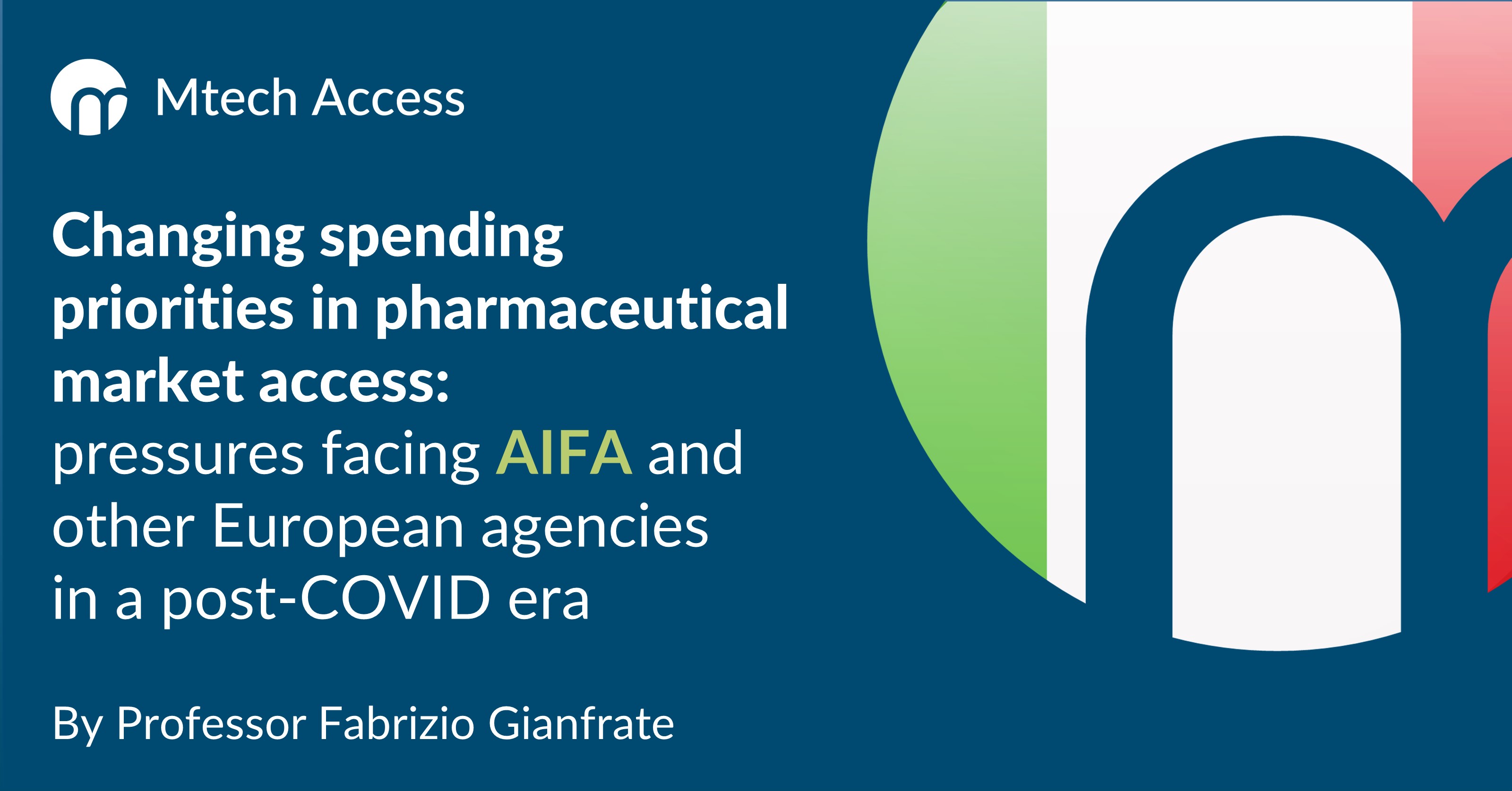
Guest author Professor Fabrizio Gianfrate shares his thoughts on how spending priorities have shifted in the pandemic, how they may further evolve in a post-COVID era, and how European agencies like the Agenzia Italiana del Farmaco (AIFA) in Italy are responding to these changing tides.
Fabrizio Gianfrate is member of the Mtech Access global faculty. He is a professor of Health Economics and Outcomes Research, and an expert in health technology assessment (HTA), health policy, and clinical trial methodology and evaluation. As a former member of the pricing and reimbursement committee of AIFA and a past formulary committee member of five regional HTA agencies in Italy, he shares with us his perspectives and experiences of market access in Italy.
In aiming to spend less, and save more, on pharmaceutical expenditure, governments usually try to contain public spending whilst still maintaining adequate coverage, by leveraging their market access and reimbursement processes, and adopting more restrictive measures.
Throughout the COVID-19 pandemic, governments have opted for massive “Keynesian” injections of public money into the productive economy and social systems, which has resulted in a lot of unplanned public spending. Although this is extremely appropriate and welcomed, this addition of debt to each national public balance is substantial, especially for those countries that already had significant outstanding debt.
The burden of these newly acquired debts will likely impact the future allocation of resources for pharmaceuticals, meaning that achieving successful market access to guarantee adequate coverage will be an even greater challenge for the pharmaceutical industry in the coming years.
Since COVID-19 arrived and changed our lives, the market access of new drugs has been impacted by the lockdown measures. All government agencies have taken measures to try to minimise this negative impact. For example, AIFA implemented a video conference tool to enable meetings previously scheduled in-person to take place virtually. However, the negotiations proved difficult as face‑to‑face meetings are characteristically very open and interactive, and this is challenging to recreate in a video conference. As a matter of fact, the number of new reimbursed products or indications in the last 9 months has been lower than the average in the same time period in recent years.
Furthermore, many AIFA resources, time and effort, went towards managing the evaluation of off-label treatments for COVID-19, and the authorisation of clinical trials for drugs already available for other indications, in a successful effort to avoid the uncontrolled use of those drugs by single centres. Also, measures allowing amendments to the design of study protocols for ongoing randomised controlled trials (RCTs) were put in place, in terms of logistics of patient management and monitoring clinical research activities.
There will be both short-to-medium and long-term consequences of COVID-19. One of the most significant is the clinical and economic burden from the healthcare provisions delayed due to COVID-19 patient restrictions or hospital attritions. For example, it has been calculated that in Italy, since February, around 20% of oncology provisions (screening, visits, treatments, surgeries, follow up) have been significantly delayed. It’s not only a matter of postponing these provisions, but also that the burden of these diseases will increase in the future, in terms of both the delay to new diagnoses and the increased number of patients progressing to metastatic conditions due to the impact of COVID-19 on oncology services. This is the opposite to the best approach in oncology: prevention.
In a more general picture, in the next few years, public health systems will presumably get extra funding. However, that additional money will likely be directed towards the implementation of vaccines, prevention services, emergency rooms (ERs) and intensive care units (ICUs). Given the increasing budget demands of these and other services (e.g. infection control departments), governments are applying extra pressure on their technical bodies (e.g. AIFA, NICE) to make the current market access processes more challenging and, consequently, to restrict “normal” drug spending. Not only will these services increase budget demands, but public health spending will also be under increasing pressure by the incoming, highly qualified innovative technologies (e.g. gene and cell therapies, combinations, earlier line treatments, chronicity, etc.). Therefore, indirectly, the new financial priorities to reallocate resources will detrimentally affect pharmaceutical spending.
Although the value threshold, including the clinical and economic value perception, differs from country to country based on their archetype, the thresholds will be raised, likely increasing the value and reimbursement price ratio overall. As result, manufacturers will need to increase their efforts to demonstrate their product’s value, as it will be harder to obtain current price levels and reimbursement conditions.
In the end, companies will create a new, crucial, competitive market access landscape. Those that are better able to drive change, even partially, will prevail in this already changed and evolving competitive scenario.
Professor Fabrizio Gianfrate is part of our global faculty of market access associates who offer insights to support our global projects. If you would like to discuss how the changing spending priorities could impact your market access journey, contact info@mtechaccess.co.uk to arrange a meeting.


